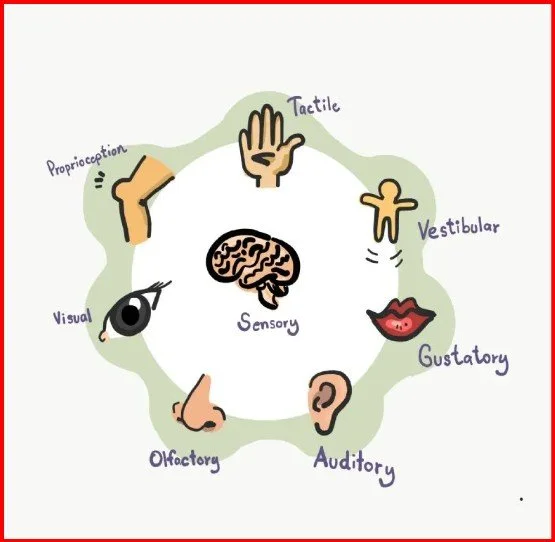Creating a Sensory-Friendly Home for Individuals with Autism
Designing a sensory-friendly home means reducing potential triggers while providing access to tools that support sensory regulation. A truly supportive environment takes into account how all eight senses—including sight, sound, touch, and movement—are affected by the home’s design and daily routines. Involving the individual in decisions ensures that the space reflects their unique preferences and needs.
Adjust Lighting and Visuals
Soften lighting: Replace fluorescent bulbs, which may flicker and cause discomfort, with warm-toned LED bulbs.
Use adjustable lighting: Dimmer switches, lamps, fairy lights, and bubble tubes can create a calm, adaptable atmosphere. In bedrooms, blackout curtains help block excess light for better sleep.
Minimize visual clutter: Keep decor simple and surfaces clear to reduce overstimulation. Use closed storage options like bins and baskets to hide clutter.
Choose calming colors: Paint walls in soft, muted tones—such as pale blue, gentle green, or earth tones—for a soothing visual effect.
Control Sound and Acoustics
Reduce noise: Use rugs, carpets, and heavy curtains to absorb sound and minimize echoes. Soundproofing panels can also help in busy areas.
Provide noise control tools: Keep earplugs or noise-canceling headphones easily accessible.
Add ambient sound: White noise machines, gentle music, or nature sounds can mask jarring background noise.
Offer warnings: Give advance notice before loud activities—like vacuuming or blending—to allow time for preparation.
Manage Scents
Go fragrance-free: Use unscented cleaning products, detergents, and toiletries to avoid triggering sensitivities.
Regulate aromas: For individuals who enjoy scents, try essential oil diffusers with calming options like lavender or vanilla. Ensure proper ventilation to prevent buildup of strong odors.
Support Tactile Comfort
Select comfortable furnishings: Choose soft fabrics for bedding, blankets, pillows, and seating. Rounded furniture edges can also help prevent accidental bumps or injuries.
Offer varied textures: Include different tactile materials—like a plush rug, velvet pillow, or a variety of fidget toys—for exploration and sensory engagement.
Choose sensory-friendly clothing: Opt for seamless, natural fabrics such as cotton or bamboo, and remove clothing tags for added comfort.
Encourage Movement and Deep Pressure
Use weighted items: Weighted blankets or lap pads can provide calming deep pressure stimulation.
Incorporate movement opportunities: Create safe areas for activity, such as a mini-trampoline, indoor swing, or crash pad made of soft cushions. These promote balance and body awareness.
Include “heavy work” activities: Tasks like pushing a weighted laundry basket or helping with yard work offer grounding proprioceptive input.
Build Structure and Predictability
Keep spaces organized: A tidy environment reduces stress. Use clear, labeled bins to maintain order.
Visualize routines: Display daily schedules with pictures or diagrams to make transitions easier and reduce anxiety about unexpected changes.
Designate activity zones: Create specific areas for different purposes—such as a quiet reading nook or an active play corner—to provide consistency and order.
Create a Calm, Safe Space
Establish a retreat area: Designate a quiet room or corner as a calming zone where the individual can unwind when overstimulated. This should always be a comfort space, never a consequence area.
Include soothing items: Stock the space with preferred calming tools like beanbag chairs, weighted blankets, fidget items, or noise-canceling headphones.

